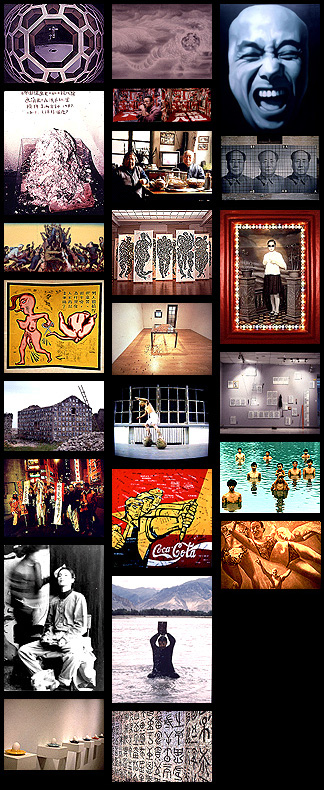
Inside Out: New Chinese Art is the first major exhibition to present the dynamic new art being produced by artists in mainland China, Taiwan, Hong Kong, and by selected artists who emigrated to the West in the late 1980s. Including works dating from the mid-1980s to the present (some commissioned for this exhibition), Inside Out focuses on works of art that explore the complex relationship between culturally specific issues and larger developments of a modern/postmodern age. Within this context, artists are appropriating and transforming both conventional Chinese aesthetic idioms and contemporary Western vocabularies to negotiate the cultural differences between past and present, self and other.
chronologies
1977
The Cultural Revolution (CR) ends with Mao Zedong's death in October 1976. But the change in leadership does not immediately result in new cultural values. From 1977 to late 1978, artists continue to produce work in the CR style, substituting new leaders for the former cast of characters. However, a few small-scale group exhibitions organized by artists feature landscape and portrait painting, challenging conventions that demand overt political/ideological subject matter in art.
...
The Stars are principally self-taught artists (i.e., not trained in the Academy) and are the first influential avant-garde group, challenging both aesthetic convention and political authority. Their use of formerly banned western styles, from Postimpressionism to Abstract Expressionism, is an implicit criticism of the status quo. The group's first exhibition, in September 1979, is a provocative display of work hung without official permission on the fence outside the National Gallery, Beijing. After the exhibition is disrupted by the police, the artists post a notice on Democracy Wall and stage a protest march. The Stars' first formal exhibition (Xing xing huazhan), held in Beihai Park, Beijing, in November, includes 163 works by 23 nonprofessional artists.
...
1990
As a result of the post-Tiananmen tightening down, as well as ongoing commercial pressures, idealist avant-garde activity in China declines drastically and never fully recovers. Art publications suffer as well. In January, Fine Arts in China, which played an important role in the avant-garde movement, is closed by authorities. In September, the most popular art journal, Art Monthly, which had devoted considerable attention to the '85 Movement, is restaffed with conservatives. One of its editors, Gao Minglu, is ordered to stop all editorial work and spend time at home studying Marxism.
...
1994
Lack of government support and declining public interest forces avant-garde artists to find alternative venues for exhibiting their work: books, magazines, private homes, less populated rural areas. For instance, artists Zeng Xiaojun, Ai Weiwei, Xu Bing, and art critic Feng Boyi fund the publication of Black Book (Heipishu), a parody of Red Flag (Hongqi), the official organ of the CCP.
...


No comments:
Post a Comment